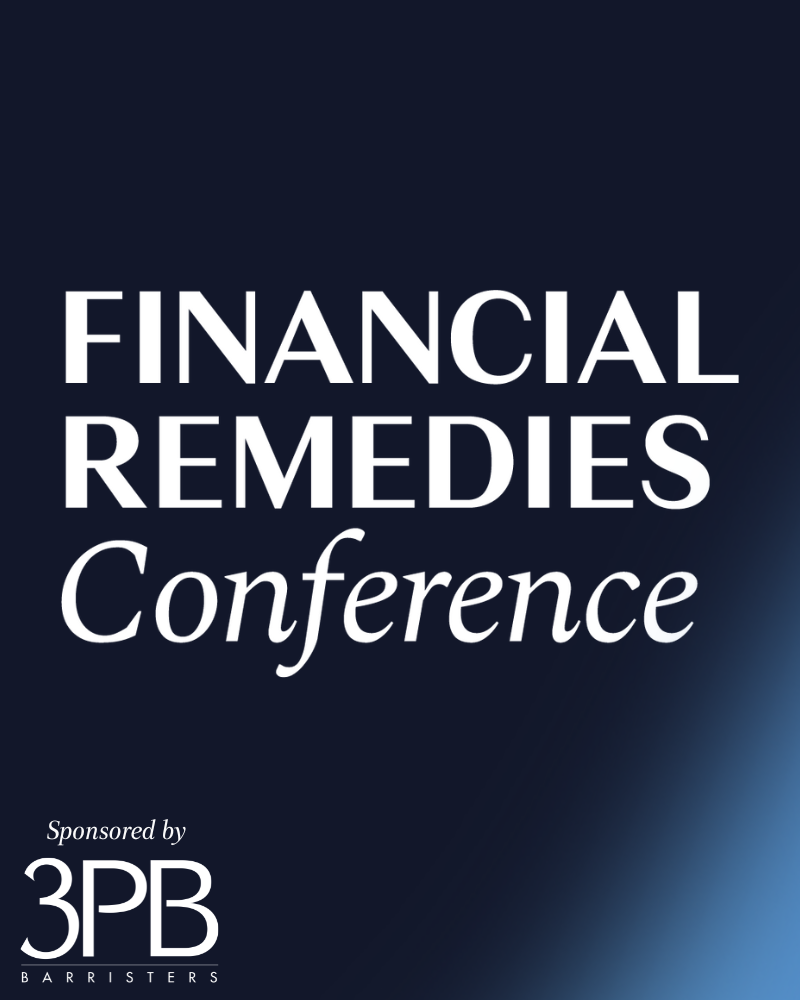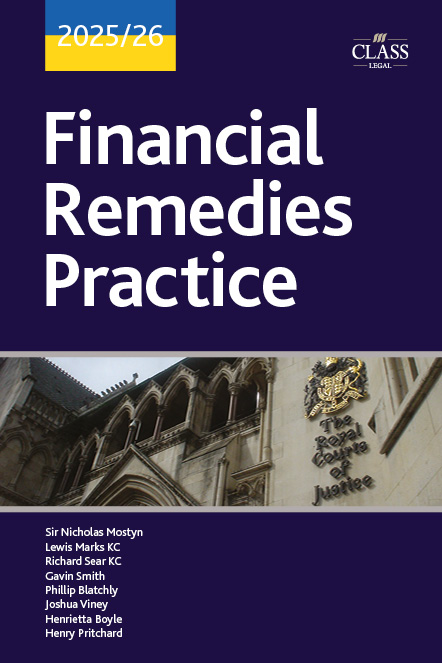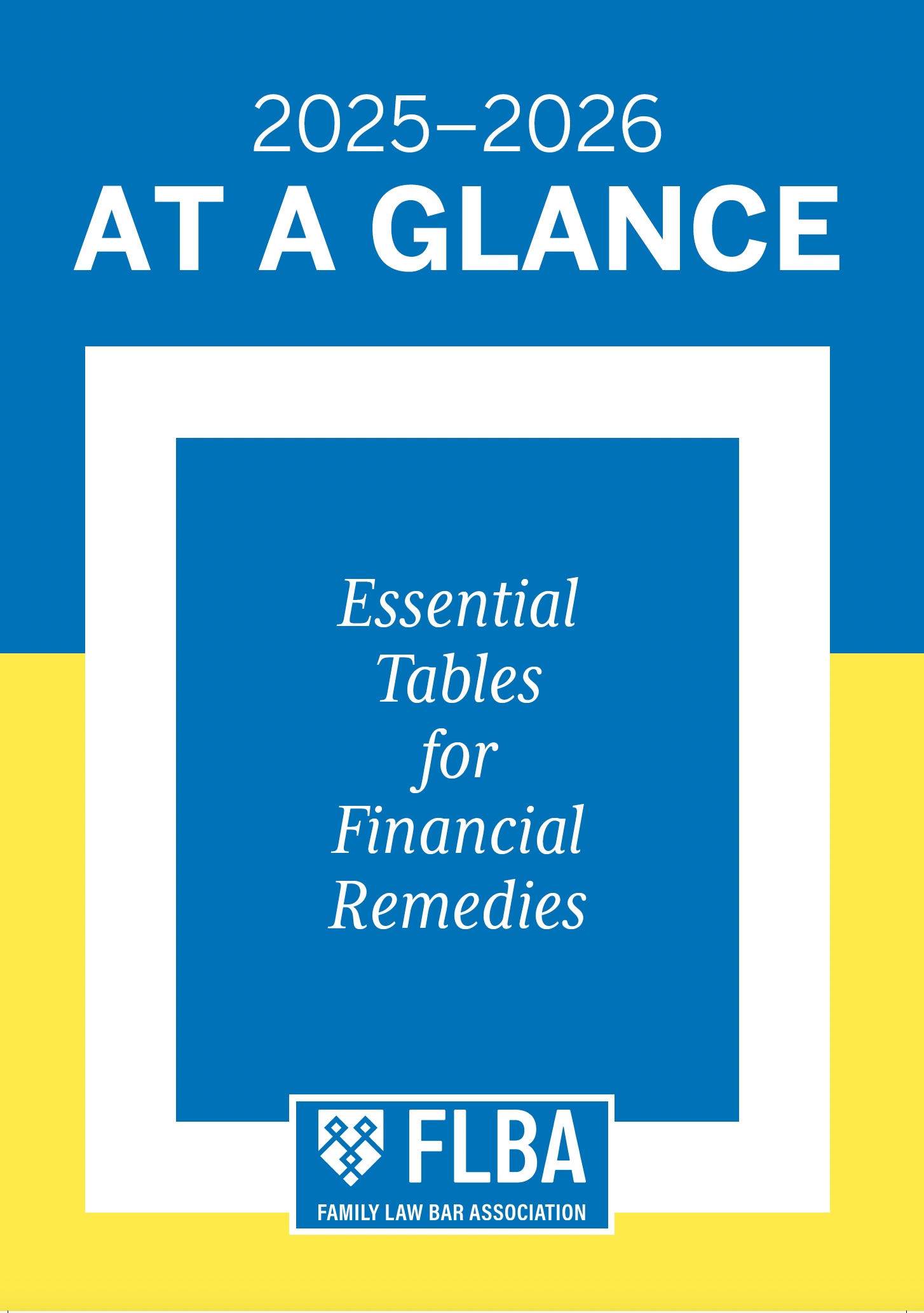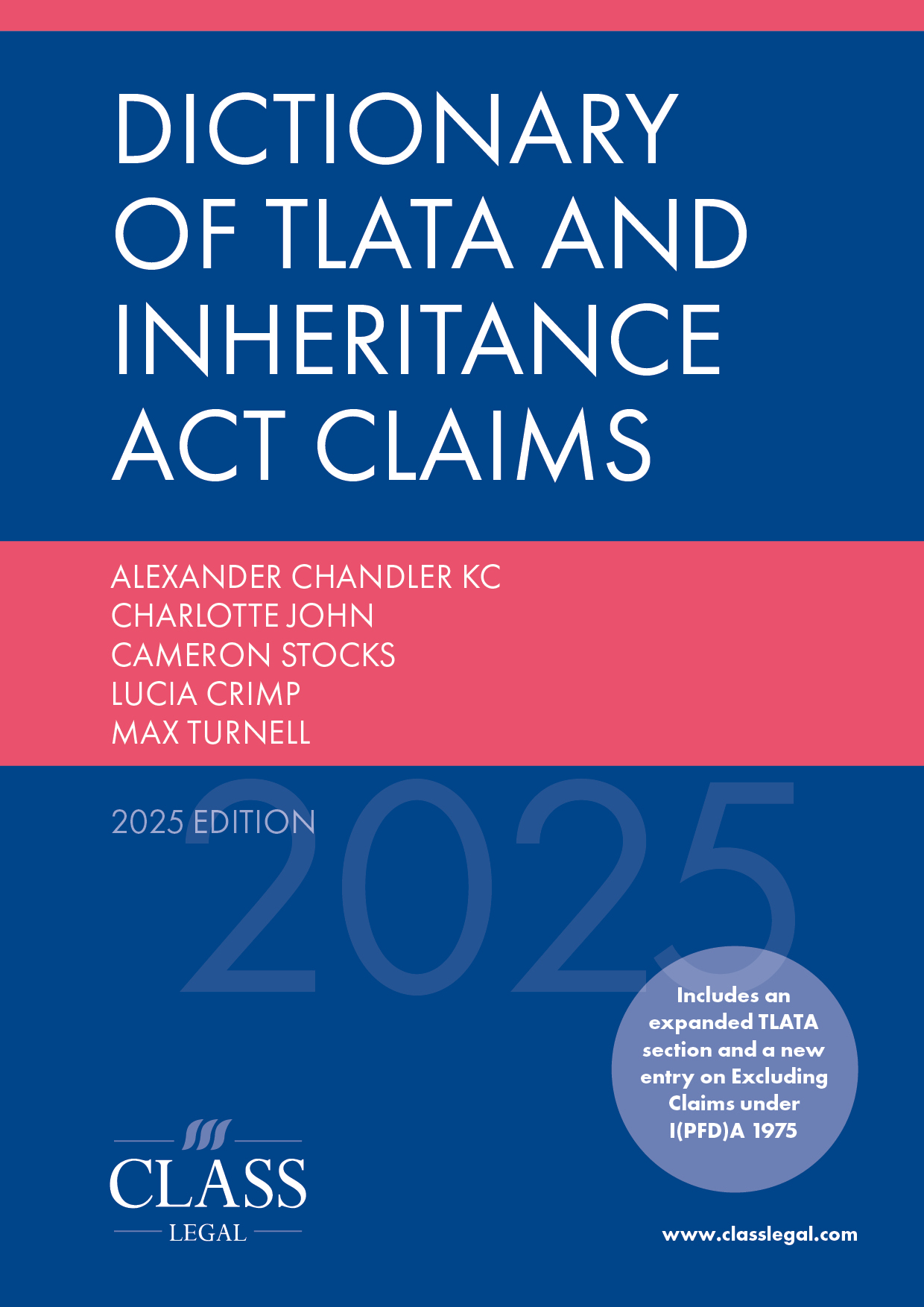
The Approach of the Family Court to Musicians’ Proprietary Interests
Published: 30/06/2025 06:00

In 2001 Bob Dylan wrote ‘I always said you’d be sorry and today could be the day, I might need a good lawyer, Could be your funeral, my trial’. The bard is often right. Where a financial remedy case involves a musician, it is likely that they will hold some form of proprietary interest in the music they have created. This can create a complex position in fact and law.
Notably, musicians are statistically more likely to end up in financial remedy proceedings than other stars. In 2022, the Marriage Foundation concluded that, across the spectrum of celebrity couples, musicians’ marriages fared the worst – some 60% were reported to end in divorce.1
Below, we set out a broad simplification of those proprietary interests, the relatively few reported cases that have involved musicians and some issues that can arise.
A beginner’s guide to proprietary interests in music
A musician’s proprietary interest will follow how the musician has participated in the creation of the music: in broad terms, one or a combination of: (1) songwriter; (2) performer and (3) recording artist.
Any musician who writes their own music will own the copyright (or a specified part of the copyright) in the piece of music they have created. They are the owner because they will be credited with either: (1) writing all of a particular work; or (2) contributing to the writing as part of a group of songwriters of a particular work. As the owner of that copyright, the musician has a number of different rights, including:
- the right to authorise the reproduction of the works either with (synchronisation right) or without (mechanical right) visual images;
- the right to authorise distribution of the works;
- the right to rent or lend the work to members of the public; and
- the right to make an adaptation of the work or to do any of the above in relation to an adaptation.
The musician can also allow or prevent someone from doing all or any of the above.
Nearly all musicians will have in place commercial arrangements for third parties to exploit these rights on their behalf to generate an income. In most cases that arrangement is a temporary one (e.g. a 3- or 5-year term). In some (albeit rare) cases, it is permanent. The income from that bargain will either be paid directly to the musician or, as is commonplace, into a company owned and controlled by the musician.
The above rights manifest themselves in different ways, however for a musician they mainly fall into two categories:
(1) Publishing rights, also known as the ‘publishing side’. This is the exploitation of the underlying composition of a particular musical work. By way of example, in 2020 Bob Dylan permanently sold his songwriting catalogue to Universal Music for a reported sum of approximately $300m. Universal Music could now produce a new version of the album ‘Highway 61 Revisited’ if it so chose.
(2) Recording rights, also known as the ‘master side’. This is the exploitation of the recording(s) that have been made of a particular musical work. After having sold his songwriting catalogue as above, 2 years later Bob Dylan permanently sold his master recordings to Sony Music Entertainment in a deal estimated to be worth between $150m and $200m. After the deal, Sony Music Entertainment would receive an income when the album ‘Highway 61 Revisited’ was purchased or downloaded.
Famously, the recording rights to Taylor Swift’s first six studio albums were owned by Scooter Braun. As the creator, Swift still owned her publishing rights and so re-recorded the works as ‘Taylor’s version’, the recording rights of which she then owned, effectively cutting Braun out.
For the publishing and recording rights, a royalty is paid out at a certain rate for a certain type of exploitation. It will depend on the contractual relationship between the rightsholder and the company tasked with exploiting that right (e.g. a publishing company).
There is an additional category known as ‘neighbouring rights’, which as the name suggests are rights designed to protect those ‘neighbours’ to the copyright holder. For a musician, this means giving protection for a specific performance of their work (e.g. a radio broadcast). Whilst not as traditionally valuable as the publishing or recording rights, they should not be overlooked and, as below, are still the subject of scrutiny in financial remedy proceedings.
The above is, very much, an overview. This is a complicated area and, where you are acting in a case with a musician, you should strongly consider obtaining specialist advice (see the McCartney case below). In many cases, including the reported cases we consider below, the valuation of the proprietary rights can be in issue. As was recently highlighted by Cusworth J in ED v OF [2024] EWFC 297, these valuations are vulnerable to the normal risks associated with a valuation (Martin v Martin [2018] EWCA Civ 2866; Versteegh v Versteegh [2018] EWCA Civ 1050). In this instance they are definitely more of an ‘art’ than a ‘science’ (H v H [2008] EWHC 935 (Fam), [2008] 2 FLR 2092).
Cases concerning music and publishing rights
We consider the three key financial remedy cases where one of the parties has been a musician:
(1) McCartney v Mills McCartney [2008] EWHC 401 (Fam).
(2) CB v KB [2019] EWFC 78.
(3) ED v OF [2024] EWFC 297.
McCartney v Mills McCartney [2008] EWHC 401 (Fam)
Here, the husband, Sir Paul McCartney was a member of the Beatles. He was, as Bennett J acknowledged, world famous. The judge commented: ‘He is, musically speaking, extraordinarily talented. He composes, sings, and plays musical instruments. He is and has been for many years famous throughout the world’. The wife, Heather Mills McCartney, was previously a TV presenter, model and public speaker. The parties had married in 2002 and separated in 2006. They had a child together in 2003.
The judge found that Sir Paul’s wealth amounted to approximately £400m. Both parties instructed their own experts to value Sir Paul’s current interests and the value of his interests in 2000. Sir Paul instructed Mr Alan Wallis, a director of Ernst and Young. Heather Mills McCartney instructed Timothy Allen of Lee and Allen. The judge accepted Mr Wallis’ evidence. The judge commented:
‘Mr Wallis is in a different league of expertise to Mr Allen. Mr Wallis told me he has 25 years experience in musical and media work. In stark contrast Mr Allen, a forensic accountant mainly concerned with claims for damages and with share valuations, candidly admitted that he had never valued a catalogue.’
The detail of the dispute between the experts was limited in the judgment to the multiplier used (see [123]). At [126] the judge surveyed the expert’s evidence over the level of research carried out over the sale of music catalogues and the varying market for these.
In his final determination, the judge put significant weight on the reality that Sir Paul’s wealth had been generated prior to the parties’ marriage, stating:
‘[311] In my judgment, in this case the needs of the wife (generously interpreted) are not simply one of the factors in the case but are a factor of magnetic importance. In a case where the vast bulk of the husband’s enormous fortune was made not only before their marriage but also indeed before the wife and husband even met; where the “marital acquest” (if such there has been) is of a very small amount compared to the total assets; where the compensation principle is not in any way engaged; where the marriage is short and where the standard of living lasted only so long as the marriage; where the wife is now and will be very comfortably housed; and where Beatrice’s needs are fully assured, surely fairness requires that the wife’s needs (generously interpreted) are the dominant factor in the S.25 exercise. Any other radically different way of looking at this case would, in my judgment, be manifestly unfair.’
What do we draw from this? Primarily that having the right expert in your camp is critical. Mr Wallis’ experience clearly rose to the fore when set against Mr Allen’s. Having an established, experienced expert upon whom one can rely, perhaps even from Form E stage or before, is undoubtedly of great assistance. Secondly, whilst it was relatively clear in the McCartney case when he had made his music (and that consequently his wealth was pre-matrimonial), it is, of course, vital to understand when your client’s music/wealth was created. This can be factually nuanced.
CB v KB [2019] EWFC 78
This was a decision of Mostyn J. The parties began a relationship in 1998, married in 2003 and separated in 2017 (a 19-year relationship). The parties had six children. The case is probably most commonly known for the proto-version of the James v Seymour calculation. The husband is a bass player in a well-known band. The husband had joined the band in 1994. In 1999 the band signed its first record deals with companies in the USA, Europe and Australia. It released its first album in 1999. At the time of the judgment, the band had made a further six albums. The judge commented that the band had been extremely successful. The majority of the band’s songs were written by another band member – ‘LS’. The judge described LS as the ‘kingpin’ and ‘rain-maker’. The husband had written only three of the band’s songs.
Mostyn J identified five different income streams:
(1) The husband’s publishing rights in respect of the three songs he had written. The parties had a narrow disagreement over this and the judge took a value of c. £55,000.
(2) Equitable remuneration (also known as neighbouring rights) in respect of broadcasts of the band’s songs on radio and TV.
(3) An agreement between the husband and LS that the husband receive 8.33% of LS’s publishing rights. The judge described this as having a ‘significant element of gratuity’ as there was no obligation on LS to do this. This agreement was to be formalised into a contractual arrangement.
(4) The husband’s one-third income share of the band’s recording rights.
(5) The husband’s share of ticketing and merchandising income generated by touring.
In valuing the above, Mostyn J had the benefit of four separate experts who were described as ‘excellent’: (1) Mr V (for the husband – an accountant, but also the band’s business manager); (2) Mr Stephen Marks (for the wife, an accountant); (3) Mr Stuart Burns (the single joint expert (SJE), an accountant); and (4) Mr David Greene (for the husband, an accountant). Mostyn J heard evidence from all four accountants, with Mr Burns and Mr Greene giving their evidence jointly, a technique known as ‘hot-tubbing’. The experts all agreed that: (1) a discounted cash flow method was the most reliable to value streams 1 and 3; and (2) a traditional ‘multiplicand-times-multiplier’ method was appropriate for streams 2 and 4. Mostyn J determined that it was not necessary to value stream 5 (it related to income generated from future touring, was therefore not matrimonial and repeated his analogy of the footballer only being paid if he plays football).
Where considering the multiplicand-times-multiplier method, Mostyn J noted that it was not helpful to use the examples of large sales of catalogues by the likes of major labels and publishers (the judge gave examples such as Warner, Universal and BMG) when valuing individual artists’ catalogues. This will obviously differ from case to case as the ‘bigger’ the artist, the more valid an analogue it might be, but as Mostyn J put it, ‘it is like using the accounts of Tesco to value the village shop in Ambridge’. Further, the income received under stream 3 had ‘a significant element of gratuity to it’ and should be discounted (after a deduction of the non-matrimonial element) by 25%.
As with McCartney, CB v KB highlights that the scope and quality of the expert evidence available to the court is critical. However, where McCartney was focussed on an overall value and, consequently, which part of that value was matrimonial, CB v KB provides helpful guidance on which valuation method could be more appropriate for each respective stream, the judge concluding in the case that:
(1) the publishing rights were to be valued using a discounted cash flow method;
(2) the recording and neighbouring rights were to be valued using the multiplicand-times-multiplier method; and
(3) the ticketing/merchandising income would not be ascribed a capital value (on the basis that it relates to future work).
ED v OF [2024] EWFC 297
This was the decision of Cusworth J. The parties had a 16-year relationship. There were two children and the husband was a songwriter and producer, said to have made music for ‘some of the biggest musical acts currently working and touring’. He was therefore distinct from Sir Paul McCartney and the husband in CB v KB, who were both performers. The parties had accepted that the bulk of the husband’s musical interests were matrimonial. Those interests were held across a number of limited companies. The parties did not agree the value of the companies.
The parties instructed Mr Paul Simnock, a consultant at MGR Weston Kay, to value the companies. Unhelpfully, all of the figures in the judgment have been redacted which makes it virtually impossible to follow. Mr Simnock applied a discounted cash flow model to the recording, publishing and producer rights. To undermine Mr Simnock’s conclusions, the husband relied upon an offer that was received, but not accepted, to purchase the husband’s catalogue. The judge concluded that, whilst offers were a useful ‘test’ against SJE valuations, Mr Simnock’s conclusions were the most reliable evidence. Whilst doing so he identified pitfalls with expert valuations (see the cases of Versteegh, Martin and H v H above). Mr Simnock also set out an anticipated income from the catalogue. He calculated it on the basis of the average of the last 5 years plus the unexpired copyright term. To produce this calculation he relied on a range of revised projected growth rates for the music industry prepared by a well-known consultant to his firm.
The expert was also tasked with considering the tax position and whether the husband would be caught by the ‘anti-phoenix’ Targeted Anti-Avoidance Rule (TAAR) on a liquidation and distribution which would cause distributions to be taxed at the dividend tax rate of 39.35% (rather than the then 20% capital gains tax rate) if he engaged in a similar trade within 2 years of his receipt of his distributions and if one of the main purposes of the winding up was the avoidance or reduction of a charge to income tax. The expert acknowledged that there was some risk of this. Cusworth J gave the husband the option to either buy the wife out within 2 years (in which case the TAAR risk was his own) or wait until the expiry of an agreement he had with ‘Big Co’ (a company that had entered a joint venture with him and consequently bought him out in 2019), at which point any TAAR liability would be shared 49% to the wife, 51% to the husband (i.e. in proportion to their company shareholdings).
As above, ED v OF again reinforces the importance of an appropriately qualified expert, perhaps to a greater degree than the preceding cases simply because the court only had the benefit of one expert (as opposed to two in McCartney and five in CB v KB). The task for the judge was not therefore to weigh up differing expert opinions, but instead to measure a theoretical valuation (the expert’s report) against an actual offer. Whilst it did not appear to weigh heavily in the judge’s decision, it is notable that the expert did not follow the valuation methods of the individual streams per CB v KB (i.e. he used a discounted cash flow methodology for all the streams, not a combination as set out above).
This case also considers in greater detail issues of liquidity and tax. The TAAR risk identified by the husband was a significant factor in the overall award and future cases could see a greater focus on this point.
Points to consider
If we draw the threads together from the above cases, where you are involved in a case or a pre-nuptial agreement where one of the parties is a musician:
(1) Understand, with expert assistance, what rights the musician has and how they are held. This is likely to be central to the case.
(2) Obtain expert advice in respect of the value of those rights. Prepare for a dispute in respect of that expert advice and pick the right expert (not only as an SJE, but in ‘your corner’).
(3) Be mindful of the fragility of the value in those rights. The case law emphasises that this is an ‘art’ rather than a science. The income stream methodologies identified in CB v KB can at best be described as a guide or starting point, rather than a rule or presumption. Is the musician a ‘one hit wonder’? Will the catalogue perform well over time? Often the underlying value may in part be attached to the popularity of the person or the genre. A band member is particularly exposed here. Imagine if another member of the band (not one of the parties) commits a crime. The value of the rights may plummet and this would have nothing to do with the parties.
(4) Take specialist tax advice from an accountant with experience in the music business. The structures used by musicians are often complicated and the applicable rate of tax can be uncertain and whether the asset is caught by TAAR.
(5) Consider carefully whether the proprietary right is matrimonial or not. It may not be possible to draw a clear line in the sand but useful indicators could include the date a piece of music was registered with a rights collection agency or, for example, the date of registration of the copyright (which is not a requirement in England and Wales, but is in other jurisdictions such as the USA).
- Musician Divorce Assets
- Divorce and Music Copyright
- Valuation of Music Assets in Divorce
- Financial Remedy Music Rights










